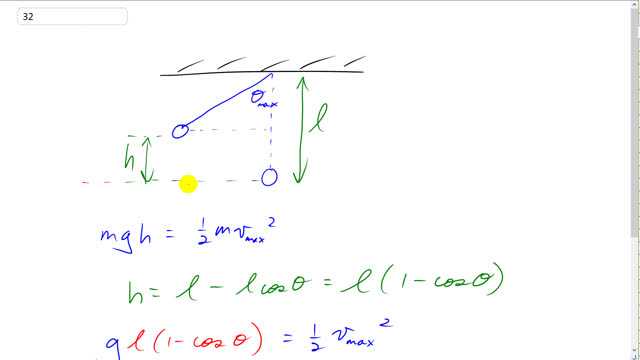
Derive a formula for the maximum speed of a simple pendulum bob in terms of , the length , and the maximum angle of swing .

In order to watch this solution you need to have a subscription.
This is Giancoli Answers with Mr. Dychko. When this pendulum is moved to θ max, its maximum angle away from equilibrium, it'll have a potential energy with respect to the equilibrium position of mgh. And when it gets down to this position here it'll have no potential energy and all of its energy will be kinetic energy 1/2 mv max squared. So, all this potential energy that it has at this position will turn into kinetic energy at this position. And we'll solve for vmax with this connection here. And this height h is going to be the total length of the pendulum, l, minus this bit here. And this bit is going to be, that's l there too. This is going to be l times cos θ max, cosine because it's the adjacent leg of this right triangle. And so h is the full length l minus this portion here, l cos θ and so factor out the l, that's l times 1 minus cos θ we substitute that in for h and cancel the m's as well. And we get this. And multiply both sides by 2. And then take the square root of both sides in here v max is square root 2 gl times 1 minus cos θ max, I guess, if you want to be precise. There.